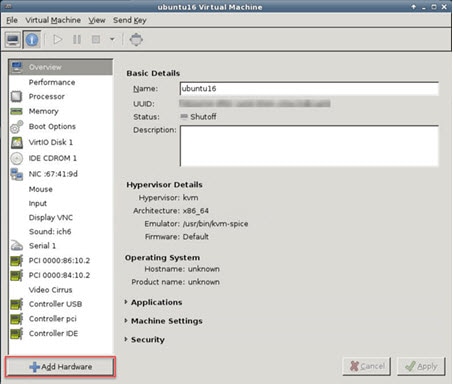Guidelines and Limitations
The specific hardware used for ASAv deployments can vary, depending on the number of instances deployed and usage requirements. Each virtual appliance you create requires a minimum resource allocation—memory, number of CPUs, and disk space—on the host machine.
 Important |
The ASAv deploys with a disk storage size of 8GB. It is not possible to change the resource allocation of the disk space. |
Review the following guidelines and limitations before you deploy the ASAv.
ASAv on KVM System Requirements
Make sure to conform to the specifications below to ensure optimal performance. The ASAv has the following requirements:
-
The host CPU must be a server class x86-based Intel or AMD CPU with virtualization extension.
For example, ASAv performance test labs use as minimum the following: Cisco Unified Computing System™ (Cisco UCS®) C series M4 server with the Intel® Xeon® CPU E5-2690v4 processors running at 2.6GHz.
Recommended vNICs
The following vNICs are recommended in order of optimum performance.
-
i40e in PCI passthrough—Dedicates the server's physical NIC to the VM and transfers packet data between the NIC and the VM via DMA (Direct Memory Access). No CPU cycles are required for moving packets.
-
i40evf/ixgbe-vf—Effectively the same as above (DMAs packets between the NIC and the VM) but allows the NIC to be shared across multiple VMs. SR-IOV is generally preferred because it has more deployment flexibility. See
-
virtio—This is a para-virtualized network driver that supports 10Gbps operation but also requires CPU cycles.
Performance Optimizations
To achieve the best performance out of the ASAv, you can make adjustments to the both the VM and the host. See Performance Tuning for more information.
-
NUMA—You can improve performance of the ASAv by isolating the CPU resources of the guest VM to a single non-uniform memory access (NUMA) node. See NUMA Guidelines for more information.
-
Receive Side Scaling—The ASAv supports Receive Side Scaling (RSS), which is a technology utilized by network adapters to distribute network receive traffic to multiple processor cores. See Multiple RX Queues for Receive Side Scaling (RSS) for more information.
-
VPN Optimization—See VPN Optimization for additional considerations for optimizing VPN performance with the ASAv.
CPU Pinning
CPU pinning is required for the ASAv to function in a KVM environment; see Enable CPU Pinning.
Failover for High Availability Guidelines
For failover deployments, make sure that the standby unit has the same license entitlement; for example, both units should have the 2Gbps entitlement.
 Important |
When creating a high availability pair using ASAv, it is necessary to add the data interfaces to each ASAv in the same order. If the exact same interfaces are added to each ASAv, but in different order, errors may be presented at the ASAv console. Failover functionality may also be affected. |






 Feedback
Feedback